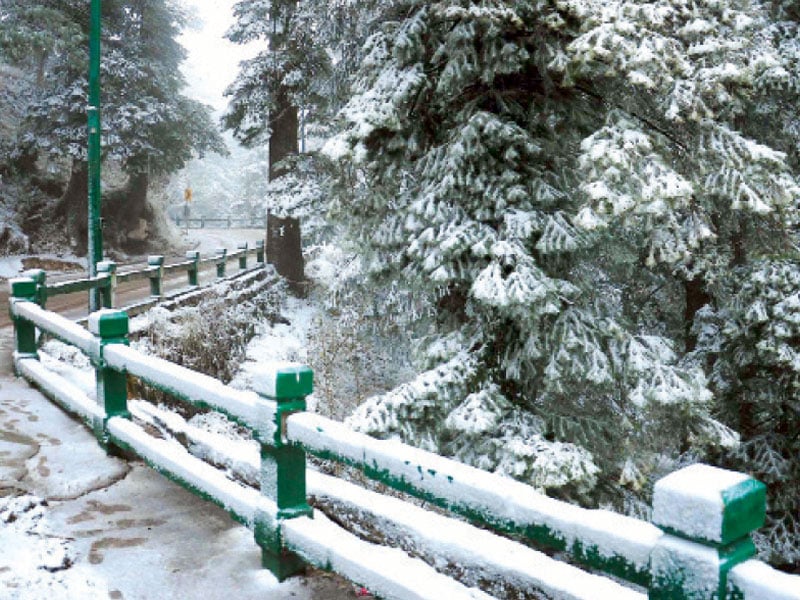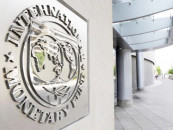Wheat in Pakistan — quo vadis?
The abolition of government procurement was a shock to the system

For years Pakistan's sclerotic wheat sector has been on life support which has cost the taxpayers and consumers billions of rupees.
Wheat is the basic staple food for most Pakistanis and makes up the bulk of our calorie intake. However, production has grown slowly, lagged behind population growth and made Pakistan increasingly dependent on foreign supplies. Between 2 and 3 million tons – around 10% of our needs – were imported in 2023-24 and it is likely that similar, if not larger, imports will be needed this year.
The main reason for this slow growth is lagging farm level productivity – yields have remained stubbornly low at around 30 maunds per acre (3 tons/ha) over the last decade.
The reasons for slow productivity growth are well known. Wheat is mostly produced by small farmers on tiny plots of land, often measuring less than 10 acres. These farmers lack technical knowledge and skills, as well as access to finance.
They have failed to adopt even simple technology interventions such as reduced tillage, planting with certified seeds, use of seed drills, balanced fertiliser and micronutrient applications, and careful use of water. There are also large on-farm and off-farm losses due to poor harvesting and lack of bulk handling and storage in modern silos.
Instead of working to improve yields through land consolidation, better farm management and improved technology, the government has in the past tried to accelerate growth by literally throwing money at it. Billions of scarce public money have been spent on subsidising costs of inputs and buying wheat at fixed prices that are often above the free market equilibrium price.
The logic that underpinned this policy is that lower fertiliser prices would increase applications and raise yields; and high wheat prices would increase the amount of land allocated to wheat while also enhancing investment in inputs such as seeds, machinery and water.
However, the policy has demonstrably not worked. The reasons for this failure are not difficult to understand. Fertiliser subsidies go mainly to medium and large-scale farmers who are already using close to optimal levels of fertilisers.
Subsidies mean more money in their pockets but bring about little change in behaviour. In contrast, poor farmers, most of whom use sub-optimal doses of fertiliser, are usually not able to access subsidies.
Similarly, poor farmers rarely benefit from high government procurement prices – the bulk of their production is for self-consumption and the surplus, if any, is usually sold at harvest time to intermediaries at whatever price they get.
With growing fiscal constraints and pressure from various domestic stakeholders as well as development partners, the government has finally stopped wheat procurement at fixed prices.
The abolition of government procurement was a shock to the system. In 2024, wheat prices fell to half their level in 2023. Wheat farmers were up in arms saying that the lack of government procurement and the collapse in prices meant that, for the first time in decades, they are unable even to cover operating costs.
The solution is not to go back to a procurement system that has failed, but to move forward to create an efficient and competitive wheat sector. Like any major structural change it will not be easy.
Some short-term measures to ease adjustment are already under implementation by the government and the private sector. These aim to improve the working of markets; provide a safety net to the poorest farmers; and enhance financial flows into the systems.
Some of these measures are already having an impact. Wheat prices for the current 2025 season were initially similar to those for 2024. However, market intermediaries have realised that with output projected to be significantly lower than 2024, prices will increase. Already there are reports of large offtakes by traders and increasing prices.
However, for the medium to long term it is essential to understand that farmers cannot make money if they continue to cultivate tiny plots, use inputs inefficiently and get yields of only 30 maunds per acre.
The brutal fact is that cereal crops, such as wheat, can only be efficiently grown on large farms that use modern technology, appropriate machinery and quality inputs. Ideally this could be done if small farmers come together to work in cooperative or consortia; if larger farmers rent land from friends and relatives; or if corporates are allowed to buy or lease land.
More dynamism is also essential to meet the challenges of climate change and in particular of changing rainfall patterns. This has resulted in higher precipitation in some of the arid areas in Balochistan and Sindh, and has expanded the potential area for wheat. But, making better use of this potential requires agile production systems.
In good rainfall years, manpower, equipment and inputs need to be quickly moved into arid areas to plant wheat. In addition, small but carefully designed investments are needed, for example, in small dams for storage and water spreading; machinery pools that can be moved quickly as needed; and low-cost storage facilities for harvested grains.
All this does not mean that small farmers should not grow wheat for their own use or for their friends and family. They should. And government research and extension systems must help them do this more efficiently. But at the same time, they should be helped to diversify into high value products where they can actually make money.
Furthermore, there is need for a more liberal approach to both domestic and international trade in wheat related inputs, particularly seeds; allocation of more funding to research, including in collaboration with the private sector and international institutions; and creation of conditions for the private sector to utilise new lands in previously uncultivated areas
The government should also liberalise wheat movements across the country, as well as allow the private sector to freely import and export. These steps are essential to create a national market that can balance out national and local supply shocks – shocks that are likely to increase in frequency and intensity in coming years.





1729685382-0/Untitled-design-(57)1729685382-0-208x130.webp)











COMMENTS
Comments are moderated and generally will be posted if they are on-topic and not abusive.
For more information, please see our Comments FAQ